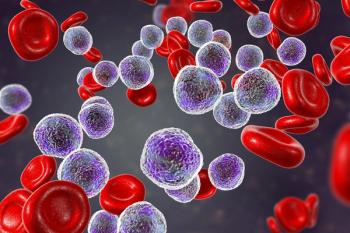
Miami Breast Cancer Conference® Abstracts Supplement
- 41st Annual Miami Breast Cancer Conference® - Abstracts
- Volume 38
- Issue 4
- Pages: 12-13
9 Elacestrant (ELA) vs Standard-of-Care (SOC) in ER+/HER2–Advanced (adv) or Metastatic Breast Cancer (mBC) with ESR1 Mutation (ESR1-mut): Key Biomarkers and Clinical Subgroup Analyses From the Phase 3 EMERALD Trial
Background
Elacestrant the first oral selective estrogen receptor degrader (SERD) approved in estrogen receptor–positive ER+/HER2-negative (HER2–) advanced metastatic breast cancer that targets ESR1-mutated tumors. In the phase 3 EMERALD study, patients who had at least 12 months of prior CDK4/6 inhibitor duration achieved a median progression-free survival (PFS) of 8.6 months with elacestrant vs 1.9 months with standard of care (SOC), indicating the endocrine sensitivity of this subpopulation (SABCS 2022). In this endocrine-sensitive population, we evaluated the benefit of single-agent elacestrant in relevant subgroups usually associated with poor prognosis.
Methods
Patients with ER+/HER2– metastatic breast cancer who previously received 1 to 2 lines of endocrine therapy (ET) and prior CDK4/6 inhibitors were randomly assigned 1:1 to receive either elacestrant or SOC. A subgroup analysis was performed in patients with ESR1 mutation by the prior duration of CDK4/6 inhibitor with ET of 12 months or more with the presence of bone, liver, and/or lung metastases, PIK3CA mutation, TP53 mutation, or HER2-low expression to support clinical treatment decisions.
Results
Overall, 478 patients were randomly assigned to elacestrant (n = 239) or SOC (n = 239), 228 patients (48%) had ESR1 mutation, and 159 patients (70%) received at least 12 months of prior CDK4/6 inhibition. An improvement in PFS favoring elacestrant vs SOC was consistent across all relevant ESR1-mutated subgroups.
Conclusions
Elacestrant was associated with a clinically meaningful improvement in PFS that was consistent across all relevant subgroups in patients with ESR1 mutation. These results demonstrate that when patients with ESR1 mutations remain endocrine sensitive (prior CDK4/6 inhibitors duration of at least 12 months), the ER pathway could be the main driver of disease despite the presence of other resistance mechanisms, and regardless of the metastases site or coexistence of PIK3CA mutation, TP53 mutation, or HER2-low expression. Single-agent elacestrant enables ET sequencing in the second line before other targeted therapies, drug combinations, and chemotherapy-based regimens, including antibody-drug conjugates.
Articles in this issue
Newsletter
Stay up to date on recent advances in the multidisciplinary approach to cancer.


















































































